I've tried to keep the entries brief, but sometimes there was a lot to say. Let me know which ones you'd like me to discuss further in later posts!
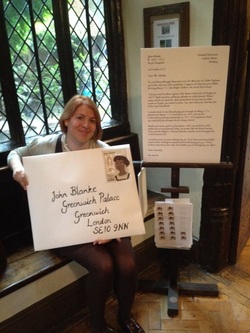
Still on till the end of November, the exhibition opened with a Family Fun Day on the last Sunday of September, with activities and an appearance by John Blanke himself!
I was delighted to see the letters I'd written to 9 Londoners in situ, with great artwork by Jane Porter.
The featured individuals were: John Blanke, fl.1507-1512; Lascars, 17th-20th century; Ignatius Sancho, c.1729-1780; Francis Barber, c.1735-1801; Olaudah Equiano, c.1745-1797; Dido Elizabeth Belle, c.1761-1804; George Bridgetower, 1780-1860; Mary Seacole, 1805-1881; Samuel Coleridge- Taylor, 1875-1912.
Sutton House in Hackney was a great venue to tell the story of Black Londoners as it was built in the Tudor period by Ralph Sadleir, who might have encountered our earliest Black Londoner, John Blanke, at the court of Henry VIII.
You can read more about the project here. And see more photos here.
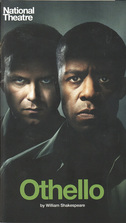
What better play to watch on the eve of Black History Month? I've studied the "Moor of Venice" in the context of my research into Africans in Shakespeare's England but the experience of watching Adrian Lester, Rory Kinnear and Olivia Vinall play out the tragedy of jealousy was something else. My viewing was in part informed by having seen Toni Morrison's excellent Desdemona last year at the Barbican. I felt the modern setting was a distraction, but was most disturbed by the speed at which Othello is transformed from a hero to a violent, irrational murderer in the central scene. Food for thought as I write an article for Literature Compass on '"Making the beast with two backs": interracial relationships in early modern England'- due out next year.
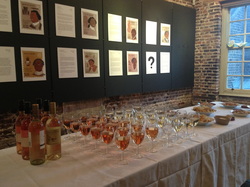
Back to Sutton House for the official launch event for the exhibition, with some honoured guests- including some of those Influential Black Londoners of the 1980s and 1990s nominated to be included in the exhibition next year. (The eventual winner was Doreen Lawrence).
This was also my first glimpse of some of the local school children's fantastic artistic responses to the letters. See this photo album for more.
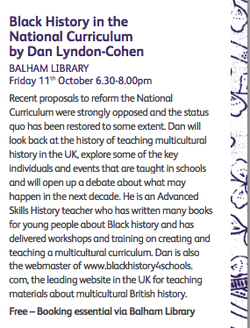
Dan is Head of History at Henry Compton School, Fulham and the creator of www.blackhistory4schools.com. He gave us a useful summary of the complicated political wranglings over the curriculum over the last year and then proceeded to demonstrate how he manages to incorporate Black History into his own teaching. Much of his approach is summarised in this article he wrote for History Workshop.
There was some strong feelings in the room- some wanted to get rid of Black History Month, others told of the troubles they'd had trying to convince their children's schools to teach Black History.
Nonetheless, Dan's pioneering approach is a model that others should emulate.
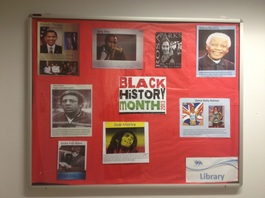 The BHM display at Beauchamp.
The BHM display at Beauchamp. On a rainy Wednesday, I travelled to Leicester to speak to some 6th formers who were "doing" the Stuarts, 1603-1642 for A-Level. This was remarkably close to a paper I had sat back in 2000- and of course had no reference to the black presence in Britain at that time.
Using plenty of images, I told the story of Africans in Stuart Britain, what they were doing, how they got here and how they were viewed in the eyes of the law. I enjoyed showing them pictures of both Oliver Cromwell and Prince Rupert depicted with black pages, and showing them a different side to history. Hopefully this will be reflected on their Black History Month display board next year- the teacher who invited me later tweeted: "my students want to start a hist soc to talk about things we don't normally do. Think your talk helped :-)."
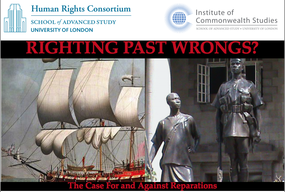
Having read about the latest move by Caricom to seek reparations for slavery, and that they were being advised by London law firm, Leigh Day, who won the Mau Mau case earlier this year, I was very curious to hear Daniel Leader of that firm talk. Also speaking were Sir Ronald Sanders, Senior Research Fellow at the Institute of Commonwealth Studies and a former Caribbean diplomat (who has blogged about reparations here) and Professor Philip Murphy, Director of the Institute.
It was agreed that there had always been a strong moral case for reparations, but the question was whether it was possible to bring a legal case.
Daniel Leader spent a long time explaining the details of the Mau Mau case, which was fascinating, but didn't give us much idea how he would go about bringing a case for slavery reparations. Professor Murphy made the point that it would be a bad idea to have politicians feeling morally cleansed, having paid reparations- can a residue of guilt serve as an inoculation against future mistakes? Sir Ronald brought up the worry that pursuing reparations might have a negative impact on the tourism industry on which Caribbean countries are dependent.
There were some strong feeling in the room that it was wrong that the case for reparations was being judged in a European court by European legal standards. From a historical perspective, I found it interesting that the case was being brought against Britain, France and the Netherlands by their former colonies, but that there is no sign of a similar move by the former Spanish and Portuguese colonies- when the Spanish and Portuguese were the originators of the transatlantic slave trade, with over 13,000 voyages marked with their flags on the
Trans-Atlantic Slave Trade Voyages database.
Ultimately the issues involved are too varied to go into here but I will watch the progress of this with interest. There's already been some interesting comment in The Telegraph, The Economist and the New York Times.
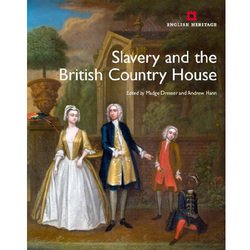
A fascinating collection of essays based on the 2009 conference of the same name, making a big step towards breaking the silence on this subject that has been deafening for too long.
You can read my review here, and find out more about my own research into links between English Heritage properties and Slavery & Abolition here. The book was launched in September at the Little Britain's Memory of Slavery Conference, and has been made available to download for free on the English Heritage website.

Miraculously managed to arrive to give this talk on time, having attended my godfather's funeral in Vienna that morning!
I presented on John Blanke, and the reality of the lives of Africans in England, in contrast to Michael's work on the Black Magi. You can read more about our double act on the IRBARE2013 website.
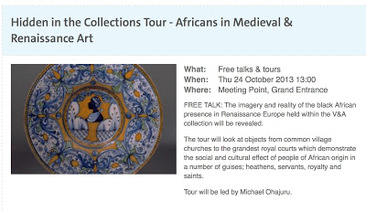
Really enjoyed Michael's tour of the V&A which he wrote up on his blog. It's a wonderful place, and the tour showed a different side to the art presented there. Michael's approach showed up some shortcomings in the museum's interpretation of some of the works on show- see his blog on this. I've heard they've already taken steps to rectify the mis-identification of Simon of Cyrene in the Marnhull Orphery (see this page for more accurate info, which has not yet been interpolated into the main listing), but it's even more vital to provide some context to the Tilman Reimenschneider statue to show that St. Maurice was usually depicted as of African origin. Michael has written a persuasive document to this effect here, but really all you need to see is the statue (below, left) alongside other images of the saint (below) and more on Pinterest:
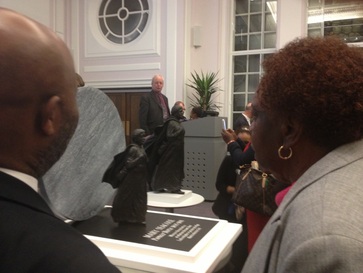
Having written about Mary Seacole earlier this year in The Times, it was fantastic to see the unveiling of this 1/4 size maquette of the statue, which is to be placed outside St. Thomas's hospital, striding towards the river and the Houses of Parliament. This will be the first statue erected to commemorate a black woman in Britain. More info on the Memorial Appeal website.
As a historian, I was particularly fascinated by artist Martin Jennings's account of his trip to the Crimea to find the site of Seacole's British Hotel. Using old maps and with the help of the local authorities, he was able to pinpoint the exact place, and found remnants of bottles and pots still lying on the ground. The 15 ft high disc behind Mary in the statue will bear the imprint of stone from a quarry near the site, which has a detonation mark from a WW2 tank. I'll be watching out for the documentary, due to air on ITV in 2015.
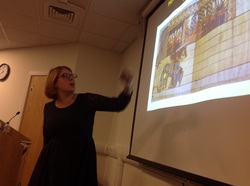
A second performance of the IRBARE double act, this time at SOAS, the School of Oriental and African Studies. Michael explained the appearance of a Black Magus in 1520s Devon while I talked about the realities of life for Africans in Renaissance England, through the experience of John Blanke, the Tudor court trumpeter (who I've now been asked to write an entry on for the Oxford Dictionary of National Biography). Read more on the IRBARE2013 website.
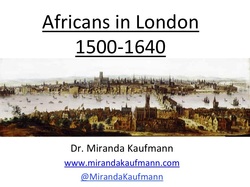
The next night, I rushed to QMUL after a day spent proof-reading the Sunday Times Food List, to talk about Africans in early modern London. I had kindly been recommended to my hosts, the QMUL History Journal, by Professor Kate Lowe, who is doing some fascinating research into sub-Saharan Africans and African objects in Southern Europe between 1440 and 1650, and was involved in the great Revealing the African Presence in Renaissance Europe exhibition I reviewed for History Today earlier this year. The QMUL History Journal had a Black History theme this term (read it online here), with an essay entitled To what extent was ‘race’ used to categorise people as ‘other’ in early modern England? by Joanna Hill, one of Kate Lowe's students, which I look forward to reading.
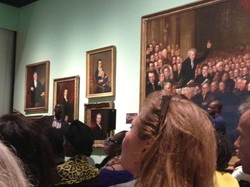
in 2003, as a response to the BBC's 100 Greatest Britons poll, in which the most diverse individual was Freddie Mercury (born in Zanzibar), Patrick Vernon launched 100 Great Black Britons, with Mary Seacole eventually topping the list. Ten years later, the campaign is being re-launched.
The debate at the NPG posed the questions: What are the issues, challenges and impact of black achievement in Britain today? And who should we be calling Great?
Patrice Lawrence of Every Generation Media chaired the debate on black achievement and British identity. The speakers were: Rev Rose Hudson–Wilkin, The House of Commons Speaker's Chaplain; Elizabeth Pears, News Editor, The Voice newspaper; Dean Atta, writer and poet and Patrick Vernon OBE, Founder of 100 Great Black Britons.
Luckily, not everyone arrived on time, so we were treated to an impromptu performance by Dean Atta. I liked the line: "Silence is not golden/Silence is the truth stolen"- seemed to chime with the Mansfield Park Complex of not speaking about slavery I wrote about here. Dean pointed out when he spoke later that all the terms "Great", "Black" and "Briton" are problematic and require definition. We discussed whether the list should expand in size, or include categories, such as Science, Law, Business, Medicine, Young achievers, Parenting, and Regional lists.
The Rev Hudson-Wilkin pointed out how important it is that white people see images of successful black people. In the same way as some people see BHM as a segregation, this Black-only list has the same problem. But, as long as the mainstream doesn't include these stories, we need BHM and 100GBB as campaigning tools. Elizabeth Pears made the point that perhaps the BBC should re-run their poll, to see whether attitudes have changed. I pointed out in the discussion that, although there's still a long way to go, there are some signs of progress in mainstream media- such as the increasing inclusion of people of African and Asian origin or descent in the Oxford Dictionary of National Biography, the National Trust's Influential Black Londoners exhibition at Sutton House, Hackney and recent discussion on the BBC Radio 4 Media Show on how to reach black audiences.

This event, organised by Everyvoice, brought together some key decision-makers from Islington Council with a great panel of speakers to debate the future of BHM.
The conference sought to address the question: how do we reach a place where people’s histories are not marginalised, so there will be no need for Black History Month? How do we ensure that diversity is integrated in mainstream education and celebrations all year round?
I had in mind the thought-provoking article I'd read by Andrea Stuart in the Guardian the day before on the same subject. I blogged my response to the article here.
The speakers were so engaging that no one seemed to mind that the event overrun its timetable. One of the most impressive images I saw was the map above that Patricia Lamour showed us that the African continent is larger than the United States, China and India put together. Dr. Robin Whitburn and Abdullahi Mohamud spoke about their Doing Justice to History project, which is designed to explode two false premises: 1) Black people did not play a significant role in British life before 1948; 2) Multiculturalism doesn't work. They used some fascinating case studies to prove their point, such as the story of Somali sailor Mahmood Hussein Mattan, who was unjustly hung in 1952. Tony Warner, Director of Black History Walks showed us how Black History is everywhere when you know how to look, and reminded us that the BFI has a regular African Odysseys film programme, as well as showing us a very disturbing video of the black doll/white doll experiment. Kandace Chimbiri talked about her Black History books for children, including one to accompany the recent Origins of the Afro Comb exhibition at the Fitzwilliam Museum, Cambridge. History teacher Martin Spafford summarised the latest curriculum wrangling and explained how Black History could still be taught within the new framework, sharing stories such as the North African "Ivory Bangle Lady" who lived in Roman York and the Indian Hockey team that beat Germany in the 1936 Olympics, which can easily be incorporated into study of "The Romans" or "Nazi Germany".
The ensuing discussion was passionate and varied. It was mostly agreed that BHM needs to continue for now, as a campaigning tool, a stepping stone to where we'd like to be, with a "Full-colour" history.
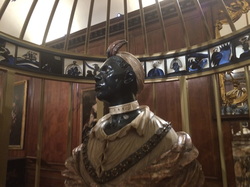
Was lucky enough to be invited to a private view, where Graeme spoke about the piece. You can see it at Kensington Palace until 6th January.
The work is a contemporary response to John van Nost’s Bust of the Moor – a marble sculpture commissioned by King William III in 1688/1689.
Evelyn places the bust within a gilded cage, but with its doors flung open to capture the view over Kensington Gardens, creating for the Moor a dream of self-determination and freedom. The inside of the cage is circled with a series of tiles telling an imagined story of the Moor's life, using the premise that this man had read Homer's Odyssey and seen parallels.
Evelyn's earlier work, Reconciliation Reredos, an altarpiece in Bristol confronts the fact that the church, St Stephen’s, blessed every ship that left the port, including every slaver that left the city harbour for Africa to trade for enslaved people during the Transatlantic Slave Trade.
Evelyn's work is part of a wider trend in which heritage institutions seeks to commission the work of black artists. Other temporary installations, e.g. Yinka Shonibare's Mrs Oswald and Colonel Tarleton Shooting (2007) for Scratch the Surface at the National Gallery and his current exhibition in Greenwich. This was discussed by
Lubaina Himid, Joy Gregory and Sokari Douglas Camp on the artists in conversation panel at the Little Britain's Memory of Slavery conference at UCL in September.
Call and Responses: Odyssey of the Moor poses many unanswered questions about Africans in late 17th Century England and Holland. Evelyn has thrown down the gauntlet to historians to answer some of these questions. For example, at it's base, the installation incorporates a contemporary report of William of Orange marching into Exeter in 1688 with: "200 Blacks brought from the plantations of the Netherlands in America, Imbroyder'd Caps lin'd with white Fur, and Plumes of white Feathers, to attend the Horfe." Evelyn hopes the piece will inspire historians to research the context of this, and what impact the advent of a Dutch monarch had on the history of Africans living in England and the history of English involvement in the slave trade.
The work has already inspired a response by Delia Jarrett-Macauley, who won the Orwell Prize for Political Writing for her debut novel, 'Moses, Citizen and Me' and is currently a Fellow in English at the University of Warwick.
You can listen to the music Graeme Evelyn listened to while creating the work here: ODYSSEY of the MOOR art 2013
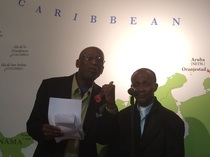 Arthur Torrington and Keithlyn Smith
Arthur Torrington and Keithlyn Smith On until Sat 21st December, this important exhibition marks the 175th anniversary of the emancipation of nearly 1 million Africans in the Caribbean. This is taking the date of freedom as 1838, when indentured labour ended, as opposed to 1834, when slavery was officially abolished.
In front of a large map of the Caribbean created specially, to show all the islands and their capitals, Burt Caesar quoted Claude McKay's If We Must Die (1919), which sets the tone for this exhibition's tale of constant resistance, "Pressed to the wall, dying, but fighting back!".
Sir Keithlyn Smith, author of To Shoot Hard Labour told the story of his grandfather's great grandmother, Mother Rachel's quest to be reunited with her daughter Minty in 1838. You can listen to the story here. Benjamin Zephaniah performed his powerful poem White Comedy and shared some of his own experiences of racism. He pointed out how important this exhibition is, to dispel the myth that "slaves were given freedom by the white man". In fact, their constant resistance and rebellion made the slave system increasingly hard to sustain. Toussaint L'Ouverture's uprsing in Haiti in 1791, leading to the declaration of independence in 1804 was the most successful, but not an isolated occurrence. The exhibition tells the stories of other attempts to make freedom- in Barbados in 1816, Guyana in 1823 and in Jamaica in 1832.
This exhibition put the agency back in African hands and tells the other side of the story we heard in 2007. A must -see! And there's now talk of putting it on at the House of Commons next year!
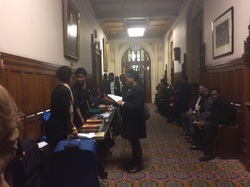
There was an impressive crowd gathered in Committee Room 11 of the House of Commons to hear Onyeka talk about his new book, Blackamoores: Africans in Tudor England, their presence, status and origins, published by Narrative Eye and discuss how to get a more inclusive history curriculum with Stella Creasy MP, Chi Onwurah MP, Cllr Lester Holloway, and Tony Warner of Black History Walks.
Onyeka gave a passionate and gripping speech about his research- he has been working on the subject since 1991. When he first set out to look into the history of Tudor Africans, people told him he was wasting his time, that he would find nothing. I heard similar opinions when I started my research on the subject in 2004. I was very pleased to get my hands on a copy of his book, for although I've known Onyeka for years, this was the first time I'd been able to read his work at greater length.
It was fantastic to see the political support for the subject from Stella Creasy, Chi Onwurah and Lester Holloway. I'm looking forward to reading the book and engaging further on the challenge it poses to politicians and educators.
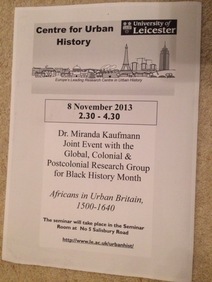
Went up to Leicester again, this time to talk about Africans in Urban Britain, 1500-1640 at the University's Centre for Urban History. I told some stories about the lives of Africans in 16th and 17th century England and Scotland's ports and cities, explaining how they arrived in Britain, what occupations and relationships they found in the city and how they were treated by the church, the law courts and the other inhabitants of urban Britain. This provoked a lively debate and I also learned about my host Dr Kidambi 's fascinating research into the All India Cricket Team's 1911 tour of England.
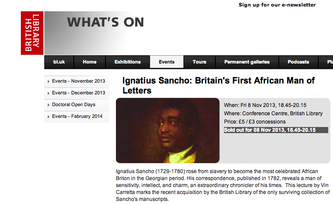
I rushed back from Leicester to catch expert Vincent Carretta talking about Ignatius Sancho, one of the Influential Black Londoners I had written to at Sutton House.
The British Library has recently acquired 13 of Sancho’s signed letters to his friend and patron William Stevenson, plus two to his father the Rev. Seth Ellis Stevenson. These are the only letters by Sancho that are known to survive.
The British Library's Untold Lives has an interesting blog post on this, but, as Carretta himself remarked, it's a great pity Sancho does not feature in the Georgians Revealed exhibition.
Carretta provided us with a handout with quotes from them and Sancho's other correspondence and proceeded to explain the significance of the new acquisition in context. One thing that makes these letters really significant is that they can now be studied alongside the printed text of 1782, revealing identities obscured and also proving beyond any doubt that Sancho wrote the letters himself. For this was questioned by none other than Thomas Jefferson who, in his Notes on the State of Virginia (1781) grudgingly admitted him "to the first place among those of his own colour who have presented themselves to the public judgment", but went on to say "This criticism supposes the letters published under his name to be genuine, and to have received amendment from no other hand; points which would not be of easy investigation." The acquisition of the Stephenson archive has made this investigation much easier and will allow scholars to defend Sancho from this underhand attack.
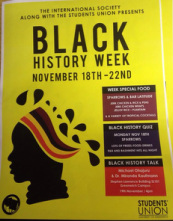
A third outing for IRBARE, this time in Greenwich, the location of the old royal palace, built by Henry VII on the site of today’s Old Royal Naval College, where John Blanke would have worked. You can read more about the presentation on the IRBARE2013 website. In the light of discussion of Black History Month's future, it's interesting to note that this talk took place in the second half of November, as part of the Greenwich Student Union's Black History Week (see poster). Could we be making a transition to a Black History Season?
For me, this is really an artificial end, because I seek out events like these all year round! Check my Talks page for details of my upcoming talks, and if there isn't one near you, invite me to your local school, university, library or history society!
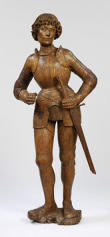

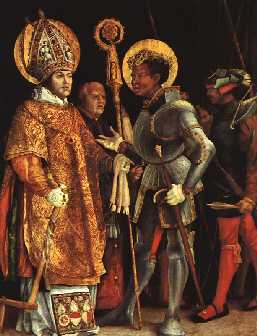

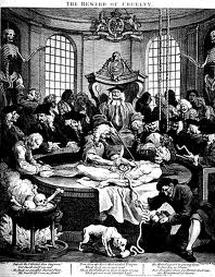
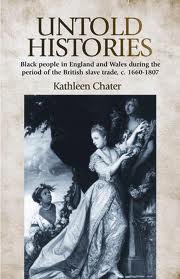
 RSS Feed
RSS Feed
